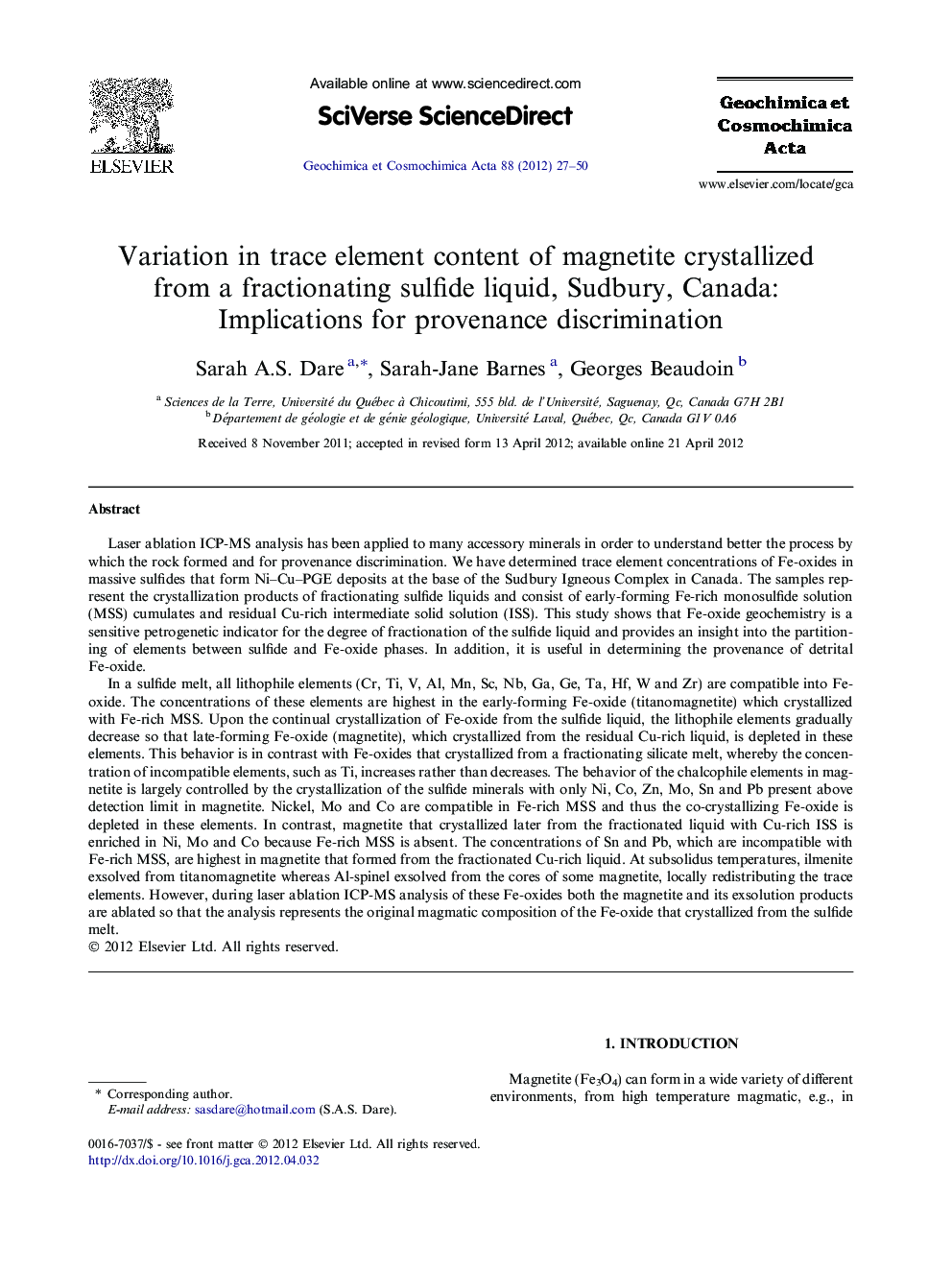| Article ID | Journal | Published Year | Pages | File Type |
|---|---|---|---|---|
| 6439213 | Geochimica et Cosmochimica Acta | 2012 | 24 Pages |
Abstract
In a sulfide melt, all lithophile elements (Cr, Ti, V, Al, Mn, Sc, Nb, Ga, Ge, Ta, Hf, W and Zr) are compatible into Fe-oxide. The concentrations of these elements are highest in the early-forming Fe-oxide (titanomagnetite) which crystallized with Fe-rich MSS. Upon the continual crystallization of Fe-oxide from the sulfide liquid, the lithophile elements gradually decrease so that late-forming Fe-oxide (magnetite), which crystallized from the residual Cu-rich liquid, is depleted in these elements. This behavior is in contrast with Fe-oxides that crystallized from a fractionating silicate melt, whereby the concentration of incompatible elements, such as Ti, increases rather than decreases. The behavior of the chalcophile elements in magnetite is largely controlled by the crystallization of the sulfide minerals with only Ni, Co, Zn, Mo, Sn and Pb present above detection limit in magnetite. Nickel, Mo and Co are compatible in Fe-rich MSS and thus the co-crystallizing Fe-oxide is depleted in these elements. In contrast, magnetite that crystallized later from the fractionated liquid with Cu-rich ISS is enriched in Ni, Mo and Co because Fe-rich MSS is absent. The concentrations of Sn and Pb, which are incompatible with Fe-rich MSS, are highest in magnetite that formed from the fractionated Cu-rich liquid. At subsolidus temperatures, ilmenite exsolved from titanomagnetite whereas Al-spinel exsolved from the cores of some magnetite, locally redistributing the trace elements. However, during laser ablation ICP-MS analysis of these Fe-oxides both the magnetite and its exsolution products are ablated so that the analysis represents the original magmatic composition of the Fe-oxide that crystallized from the sulfide melt.
Related Topics
Physical Sciences and Engineering
Earth and Planetary Sciences
Geochemistry and Petrology
Authors
Sarah A.S. Dare, Sarah-Jane Barnes, Georges Beaudoin,
